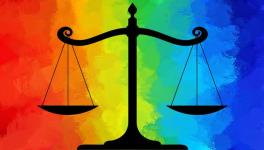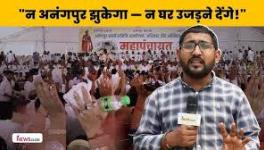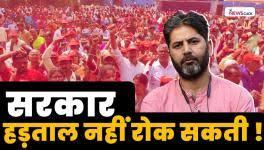How Indians Turned Social Media Into COVID-19 Helpline to Battle Pandemic
Death, sickness, and helplessness have become the “new normal” that Indians are being forced to live with as they witness the collapse of an already inadequate health care system and the failure of its political system that was caught napping on the uptick of cases, which showed an upward trend as far back as February.
For many families, who have been left to their own devices, social media platforms, like Twitter, Facebook and Instagram are now being used to search for hospital beds, oxygen cylinders and medications for loved ones. These platforms have become the “COVID-19 helplines” for most Indians.
Ironically, instead of helping its citizens in their hour of need, the Bharatiya Janata Party-led government of Prime Minister Narendra Modi is busy trying “to control the narrative” on social media sites like Twitter by asking the company to take down tweets that are critical of its handling of the COVID-19 crisis.
Even as the crisis continues to engulf the country, the government had distanced itself from any blame for allowing this surge in cases resulting from allowing religious congregations like Kumbh Mela and holding political rallies.
Turning to Each Other For Help
India’s 1.38 billion citizens largely feel abandoned by the government they helped vote into power in 2019. Fighting lone battles for the lives of their loved ones has proved to be an uphill task, leading them to turn to each other for help.
On a daily basis, Facebook, Twitter and Instagram feeds are flooded with requests for oxygen cylinders—which are in dire shortage, especially in Delhi—as well as hospital beds, medications for critically ill patients and availability of plasma donations.
“[P]eople are bypassing the conventional lines of communication and turning to Twitter to crowdsource help” during the crisis of India’s second COVID-19 wave, according to an article in Mint.
The responsibility of providing medical oxygen lies with the Central government, a fact that the courts in India have also highlighted while asking the Centre to employ whatever means necessary to supply oxygen to hospitals, especially in Delhi. Meanwhile, the Centre is now trying to pass on the blame for the shortages in the health care system to the states.
In all of this, social media has played an important role in filling in the information gap relating to the availability of beds, oxygen cylinders and medicines. There are some who have been lucky to receive the help they need to save a loved one, but a majority of Indians live in rural areas, and many of them do not have “access to a smartphone or use social media,” according to an article in the Wire: “For the vast majority of Indians struggling to get help, repeatedly calling inundated phone lines or carrying patients to emergency wards in person is the only option—highlighting the impact of the country’s digital divide.”
How Government Is Using Social Media
Instead of responding to the pleas for help by its citizens, the Indian government is instead carrying out a face-saving exercise by asking social media platforms to take down posts that are “critical” of its handling of the COVID-19 situation.
“Twitter recently removed around 50 posts and URLs that were ordered to be taken down by the Indian government. Other social media platforms like Facebook have also removed 50 posts. The posts that have been taken down were reportedly criticizing the government for poor handling of the COVID-19 crisis in the country amid the second wave of the pandemic,” reported Mint.
India’s Ministry of Electronics and Information Technology asked that these posts be removed to “‘prevent obstructions in the fight against the pandemic’ and disruption of public order due to the said posts,” according to the Mint article.
As many as 52 tweets that were taken down were from journalists, opposition politicians and filmmakers, according to a report from the Times of India that cited Lumen Database, a Harvard University initiative.
In Uttar Pradesh, one of the most populous states in India where the BJP is in power, Chief Minister Yogi Adityanath has demanded that “action be taken under the National Security Act and properties of those spreading ‘rumors’ and propaganda on social media be seized.” Recently, a criminal case was filed against a man in the state “who took to Twitter to make an appeal for an oxygen cylinder” for his sick grandfather, stated the Wire. The charges against him included, “circulating a rumour ‘with intent to cause… fear or alarm.’”
In an interview with BBC’s “Newsnight,” BJP national spokesperson Gopal Krishna Agarwal responded to accusations that the government was getting social media posts taken down, saying, “When our government pointed out that these [tweets and posts]… are not conducive to the current national interest… Twitter and other social media agreed.” He claimed the social media content was “based on fake news” and that it had an “agenda”—but it is unclear what agenda the removed posts might have had besides highlighting the devastation caused by the uncontrolled spread of the virus, or amplifying the truth about how many Indians feel the blame lies with the government for failing to prevent the inevitable and address the crisis.
“[I]t’s easier to take down tweets than it is to ensure oxygen supplies,” said Aftab Alam, a professor at the University of Delhi, in a tweet quoted in a New York Times article.
Meanwhile, on April 30, the Supreme Court of India, which is the highest court of the country, took note of the muzzling of information by the government and made it clear that “if citizens communicate their grievance on social media and the internet, it cannot be said it’s wrong information,” according to an article in the Indian Express. It has also warned that any attempt to clamp down on information would be treated as a “contempt of court.”
Too Little Too Late
In the wake of the surging cases in India, several governments across the world have finally come forward and extended help to the country. On April 28, the country’s deaths due to COVID-19 crossed the 200,000 mark. This number, however, doesn’t seem to reflect the true picture of just how bad things are on the ground, with many media outlets reporting that deaths due to COVID-19 are mostly undercounted in India.
India has been adding more than 300,000 new infections every day during the last week of April and has overtaken Brazil as having the second-largest number of COVID-19 cases in the world. India is now second only to the United States, which as of April 30 leads the world in COVID-19 cases (and has a population a quarter of the size of that of India).
Meanwhile, at least eight countries have offered help to India so far. “[T]he UK, France, Germany, Ireland, the U.S., Australia, Kuwait and Russia have announced help to India in various forms to deal with the unprecedented health crisis gripping the country due to the fast spread of the COVID-19 pandemic,” according to the Hindu BusinessLine.
Non-profit organisations have also stepped up to mobilise support required on the ground relating to information dissemination and providing relief packages to the migrant populations, who are often left to fend for themselves.
Even as Indians try to do everything in their power to overcome this second wave on their own, the question remains: Is it too little too late?
Ruhi Bhasin is assistant editor at the Independent Media Institute. Previously, she worked as an editor and a senior journalist at the Times of India and the Indian Express covering politics, legal matters, and social issues. She can be reached on Twitter @BhasinRuhi.
This article was produced by Globetrotter.
Get the latest reports & analysis with people's perspective on Protests, movements & deep analytical videos, discussions of the current affairs in your Telegram app. Subscribe to NewsClick's Telegram channel & get Real-Time updates on stories, as they get published on our website.
























